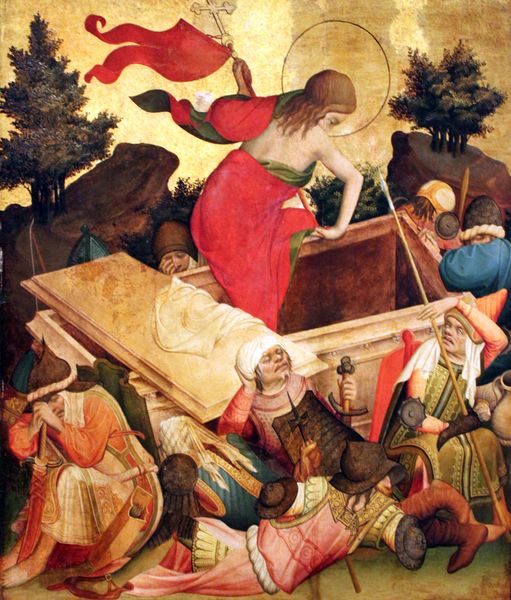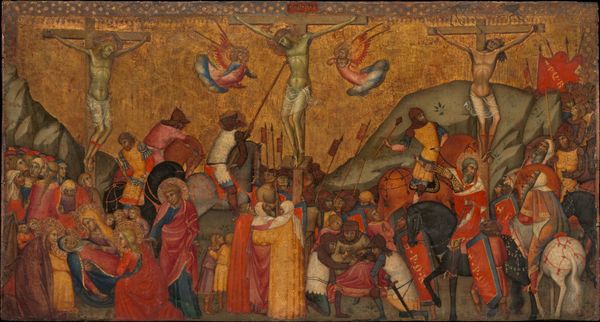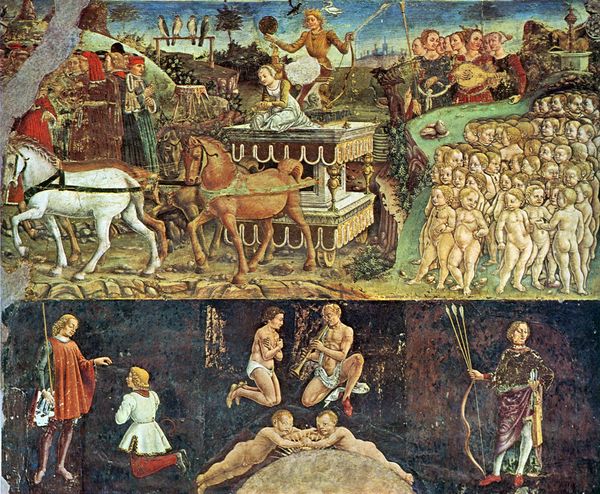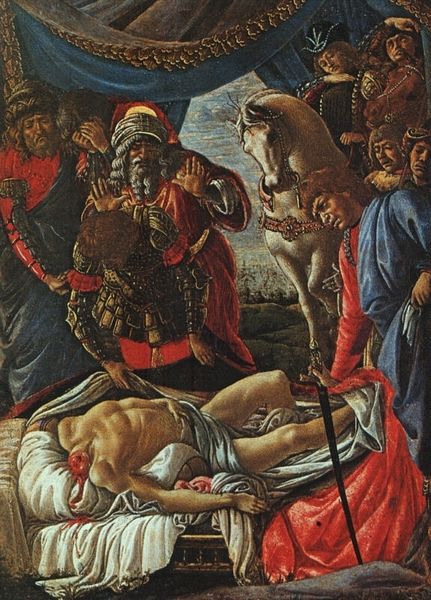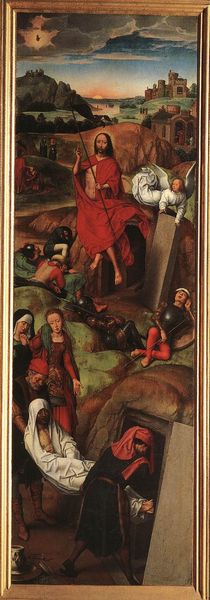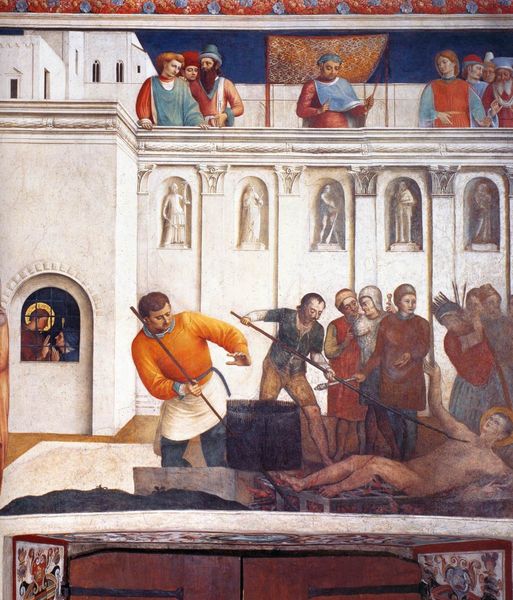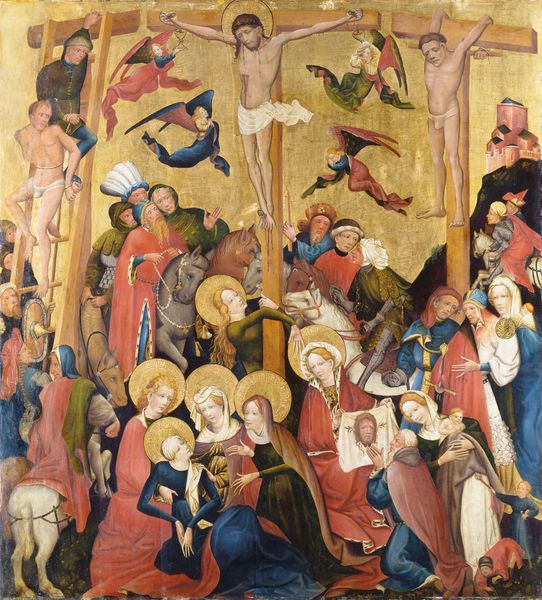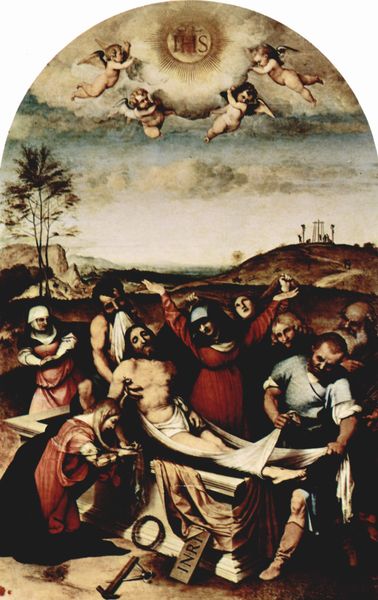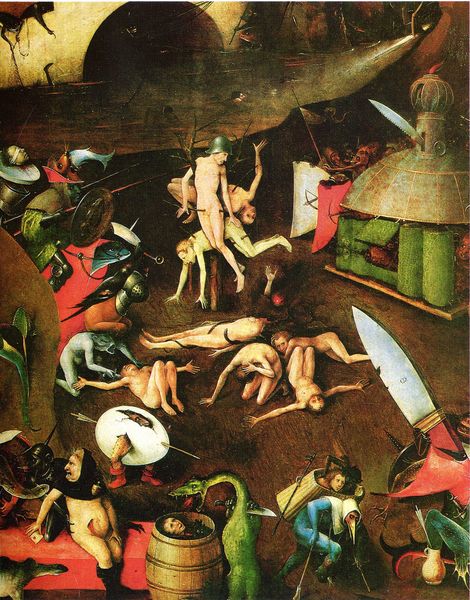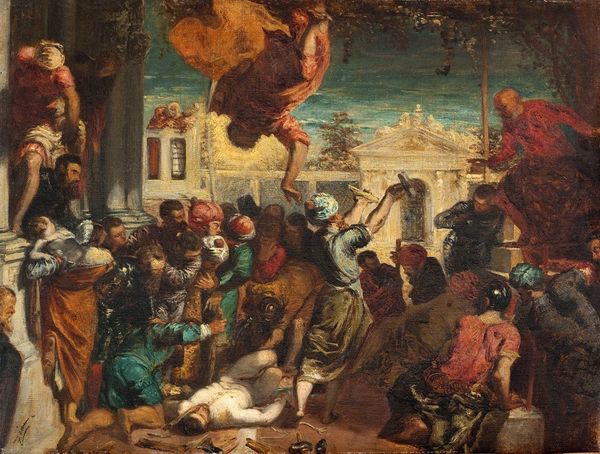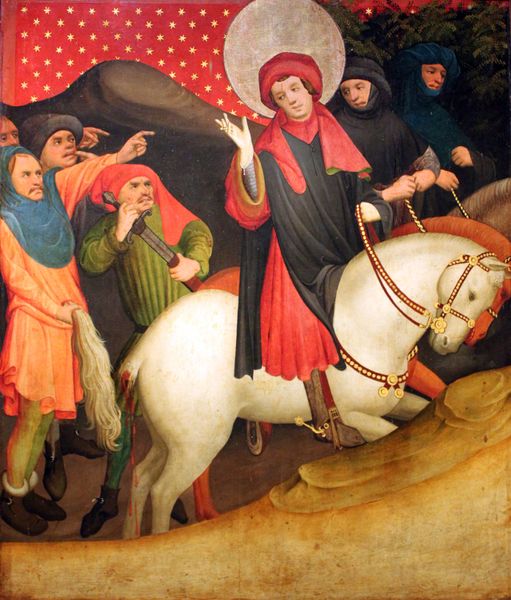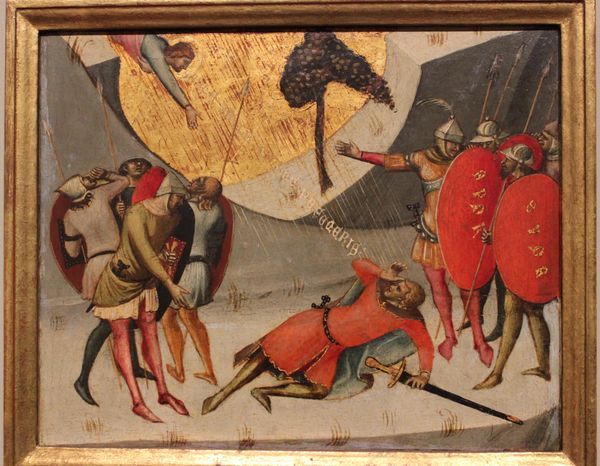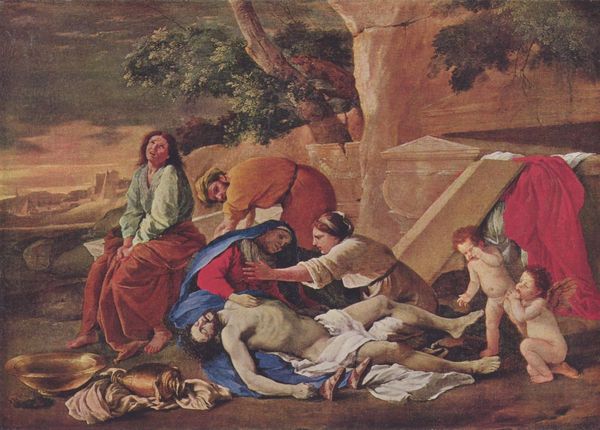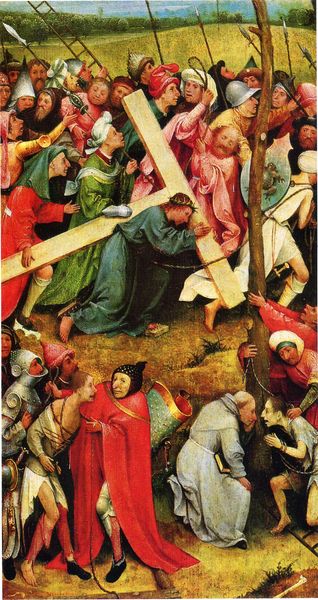
panel, tempera, painting
#
panel
#
narrative-art
#
tempera
#
painting
#
figuration
#
oil painting
#
history-painting
#
italian-renaissance
#
early-renaissance
Copyright: Master Francke,Fair Use
Editor: Here we have Master Francke's "Resurrection of Jesus" from 1424, a tempera on panel painting. There's almost a raw, graphic novel quality to the scene that feels strangely modern for something made so long ago. What stands out to you in this piece? Curator: It's intriguing how Francke manages to convey such a pivotal religious moment with a kind of...earthiness. You feel the struggle in Christ's ascent, pulling himself from the tomb, his banner rippling against what seems to be a golden dawn. I am struck with how intimate Francke has rendered what is normally depicted as triumphant scene. Does the positioning of the soldiers suggest anything to you? Editor: The soldiers! They're completely overwhelmed – slumped over, startled, utterly human in their reaction to the divine. I almost missed them initially because Christ's figure dominates the composition. It makes the Resurrection feel very personal. Is this an early example of imbuing biblical stories with real emotion? Curator: Precisely. Francke captures an interiority of religious experience that moves beyond mere didacticism. These aren't just figures in a story; they're feeling something. He even used gold leaf in an unexpected manner. What does the halo tell you, in comparison with, say, the shine of the soldier's armors? Editor: Now that you point it out, it really tones down the idealization in favor of showing a vulnerable Jesus. Very intriguing, so how has he done this without giving the figure the qualities of a real person? Curator: A great question. While the moment is highly personalized, note the abstraction: Francke moves toward capturing the moment using shape, the golden hues of heaven and by his very rendering style! Editor: This makes me view religious art from this period with totally new eyes. Curator: It just makes one think about how the personal is shaped by shared mythologies and traditions, no? It seems that even artists need to reflect about what art is after they have painted their paintings...
Comments
No comments
Be the first to comment and join the conversation on the ultimate creative platform.
